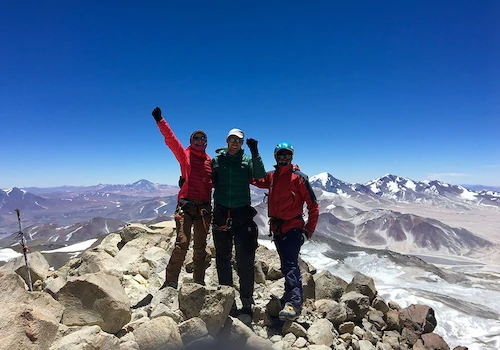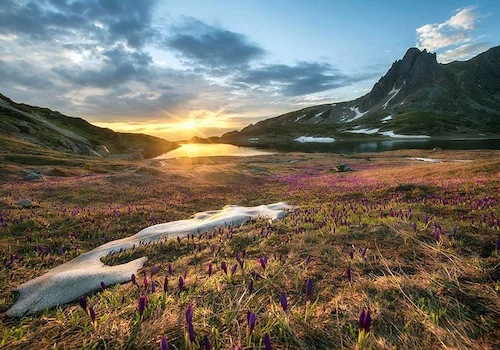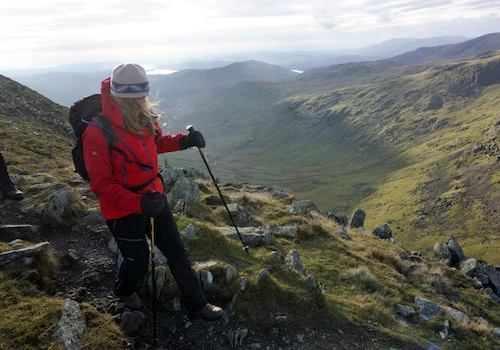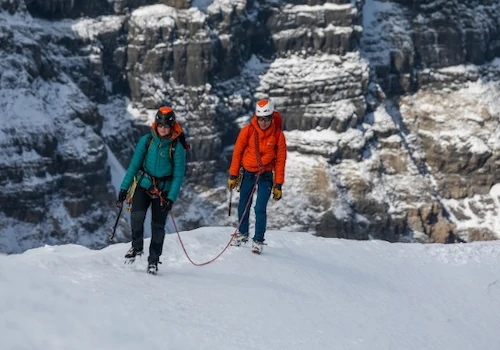
- Expeditions
By Region
By Month
By Grade
By Height

- Treks
- UK & Alpine
- Schools
- Hire
- News
- Shop
Grades
Expedition grades
Trek grades
Course grades
SAFETY WARNING
Mountaineering and Trekking can be dangerous and carry an inherent risk of injury or death, which cannot be eliminated. You must accept that, although we do our utmost to reduce risk, there always remains a chance of accidents happening. Our leaders will continually make decisions about prevailing snow conditions, the weather and the ability of individuals and the group with safety in mind. They will make professional judgements to minimise the risk of objective dangers such as avalanche, ice-fall or stone-fall and weather, but these risks cannot always be predicted nor removed whilst in the mountains. All mountaineering and trekking at high altitude involves risks of altitude illness. Whilst our expeditions and treks have an appropriate acclimatisation period this cannot entirely remove the dangers of altitude as individuals acclimatise at different rates and the symptoms can be unpredictable. Severe cases necessitate descent and, in extreme cases death can occur.
Expedition grades
Variable grades are given where there are options for different levels of climbers
Grading routes is a complex combination of factors including:
- The technical difficulties of the crucial sections of the route
- Length of the route
- Height of the peak
- Objective dangers
The overall grade is defined within a scale of 1 to 6 for technical difficulty together with a letter grade A-E indicating the level of fitness required alongside other variable factors. All technical difficulties described for each grade may not be relevant, for example if the route is predominantly on snow then rock climbing skills may not be needed. Please feel free to contact Adventure Peaks if you are in doubt as to whether your experience or fitness would match your choice of expedition.
Technical Difficulty could include:
1.Easy scrambling, broad scree or low angled snow ridges at angles up to 30 degrees. Ropes are not usually required.
2.Snow and ice sections at a low angle of up to 35 degrees. Winter walking experience using crampons is essential together with snow skills.
3.Snow and ice sections at an angle of 35-45 degrees. (Alpine PD+ Scottish Grade 1/2 Rock VD).Previous use of ice axe and crampons in a Winter mountaineering environment is essential.
4.Snow and ice sections at angles over 45 degrees with steep steps which may also include rock. Confident mountaineering skills including some rock and ice climbing experience. Previous Alpine climbing or high altitude experience is normally required unless technically very confident beyond the grades below. (Alpine AD Scottish Grade 2/3 Rock severe).
5.Sections of very steep snow and ice at angles over 50 degrees. Rock sections up to VS. Suitable only for experienced mountaineers who can be self-sufficient, previous alpine experience is essential. (Alpine D Scottish Grade 3 Rock VS).
6.Very steep snow and ice with sustained steep ice pitches, Rock sections up to HVS. Previous experience of high altitude Mountaineering is essential. (Alpine TD Scottish Grade 3-4 Rock HVS).
Fitness:
A. Sufficient fitness to enjoy multi day walks 6-7 hours per day.
B. Good cardio-vascular fitness that would normally require some training by running, cycling or gym work combined with previous mountain walking.
C. Training would tend to become essential to attain a good level of fitness. Previous experience of multi-day hill walking is essential.
D. A high level of all round fitness will be required to cope with the exceptionally strenuous nature of these expeditions.
E. A resistance to extreme weather conditions over extended periods of time. Heavy loads over multiple days may need to be carried.
Expedition Fitness
In all cases your chance of success and level of enjoyment will depend very much on your level of fitness. The grading system gives you an indication of the level required for each expedition. It is important that you judge your level of fitness carefully. Whilst on expedition if your fitness is deemed to be inadequate our leaders would ask you to remain at camp, so we strongly recommend you come along to one of our Weekend Meets to help us confirm your fitness level.
Trek grades
Our grading system gives an overall view of the trip and takes into account a combination of the distance trekked, toughness of the terrain, altitude, weather, remoteness and finally the level of support and comfort.
The grades should be read in conjunction with each individual trek description and with an understanding that some of the grades are based on factors that are changeable. As a result the grades can only provide a general indication. If you have any questions about the nature of a particular trek or whether it is suitable for you, please contact the office.
T1- EASY
Ideal for those who are looking for shorter days on good paths at a low altitude. Manageable by anyone in good health. Treks are usually day excursions from comfortable accommodation. These trips tend to provide more time for cultural visits and related activities.
T2 – MODERATE
Longer treks, but still suitable for those of you trying multiday treks for the first time. Usually no more than seven days trekking during the trip. The treks will mostly be on good paths; however, for your enjoyment a reasonable level of fitness is required as the treks could involve extended amounts of ascent and descent. Mixture of hotel / refuge / camping accommodation.
T3 – DIFFICULT
These treks are longer, more physically demanding and go higher. Suitable for walkers who are looking for ‘a bit’ of a physical challenge. Accommodation will be mostly tents and/or basic huts or teahouses. Occasional backpacking may be necessary (see below).
T4 – CHALLENGING
These treks will be physically demanding, often involving altitude. Suitable for regular mountain walkers who are used to extended multi day trekking. These would be a big challenge for first timers. Backpacking may be necessary (see below).
T5 – STRENUOUS
These are generally our longest treks which involve multi day trekking reaching high altitudes. A high level of fitness and readiness to ‘rough it’ is essential. Backpacking may be necessary (see below).
T6 – TECHNICAL
These are our toughest treks, bordering on mountaineering. They involve multi day trekking in isolated areas at high altitude. The treks may also include high, difficult pass crossings and glacier crossing and require some basic mountaineering skills and equipment. A high level of fitness and previous experience of ice axe, crampons and rope work is essential.
b – backpacking
A number of our treks (mostly treks in Europe) involve a certain amount of backpacking where you will be required to carry your personal gear with you. These are identified by a letter ‘b’ at the end of the grade. The amount of carrying required varies from trek to trek as we will arrange for your main baggage to be transferred to some overnight stops wherever possible. Full details of the amount of carrying required is explained in the individual trip dossiers which can be downloaded from our website. With careful packing and using modern lightweight equipment, 10kg should be the absolute maximum you will need to carry – usually it will be less.
Course Grades
Our courses are given a grade, not so much as to show how challenging they are, but more to guide you as which one to choose according to your level of experience in the relevant activity.
INTRODUCTORY
These courses are designed for complete beginners who want to try out the activity for the very first time, or for those who have done a little but feel happier starting from scratch again. A good degree of fitness and determination is useful however!
INTERMEDIATE
These courses are for those who have either already completed an introductory course or have previous experience in that acticity and looking to progress their skills to a higher level.
ADVANCED
These are courses with a specific objective and only suitable for people with a high level of competency in that activity.
Definition of what it means to join an adventure peaks expedition – please read
Adventure Peaks expeditions/treks are all ‘professionally-led’ whilst our courses are ‘guided’ or ‘instructed’. An expedition comprises an Expedition Leader (appointed by Adventure Peaks), expedition members (you) and local guides/staff (specifically recruited in-country for their local knowledge). Our expeditions are well resourced and equipped; every effort is made to ensure that objectives can be met.
Expedition members are expected to have acquired the necessary training and experience needed for our expeditions, so please check you meet the pre-trip requirements before booking. During an expedition it may be possible to refresh some of the skills, but this should not interfere with or detract from the main objective of reaching a summit or completing a trek. Practising skills will also be dependant on the particular expedition and conditions.
As a team member, you will share in a wealth of experiences that an expedition has to offer: different cultures, extreme climates, new altitudes and technical mountaineering challenges. Every member in the team has a part to play in the safe outcome of the adventure you are taking part in. This will be proportionate to the individual’s knowledge and experience.
Participation Statement
Adventure Peaks recognises that climbing, hill walking and mountaineering are activities with a danger of personal injury or death. Participants in these activities should be aware of and accept these risks and be responsible for their own actions and involvement.
Adventure Travel – Accuracy of Itinerary
Although it is our intention to operate this itinerary as printed, it may be necessary to make some changes as a result of flight schedules, climatic conditions, limitations of infrastructure or other operational factors. As a consequence, the order or location of overnight stops and the duration of the day may vary from those outlined. You should be aware that some events are beyond our control and we would ask for your patience.
The leader is responsible for the overall safety of the whole team during the expedition and will encourage the use of safe climbing practises during the expedition. They will ensure that every opportunity is taken to fulfil the objectives described in the trip’s outline itinerary, but have the freedom to modify any plans subject to weather, delays or unforeseen circumstances which are deemed to be out of the control of Adventure Peaks. The leader will maintain a good team spirit and attempt to keep morale high for the whole group. Wherever possible the leader will keep the Adventure Peaks office informed of team progress and any emergency situations that may arise. The leader will be responsible for overseeing team harmony and ensuring that outline plans are running smoothly.
Local guides possess the detailed local knowledge we need to achieve our goals and support our teams. Local guides are not ‘Guiding’ in the same way as UIAGM Alpine Guides, but work in the more traditional sense as route finders and assistants to our expedition leader. We encourage our groups to work as teams, helping to support and trust each other throughout the duration of the expedition.



Newsletter Signup
Sign up for Adventure Peaks News Never miss our late availability, offers, news and shop promotions
Newsletter SignupInformation Request
If you have a question about any of our courses, treks, or expeditions, then just click on the button below.
Ask Question



